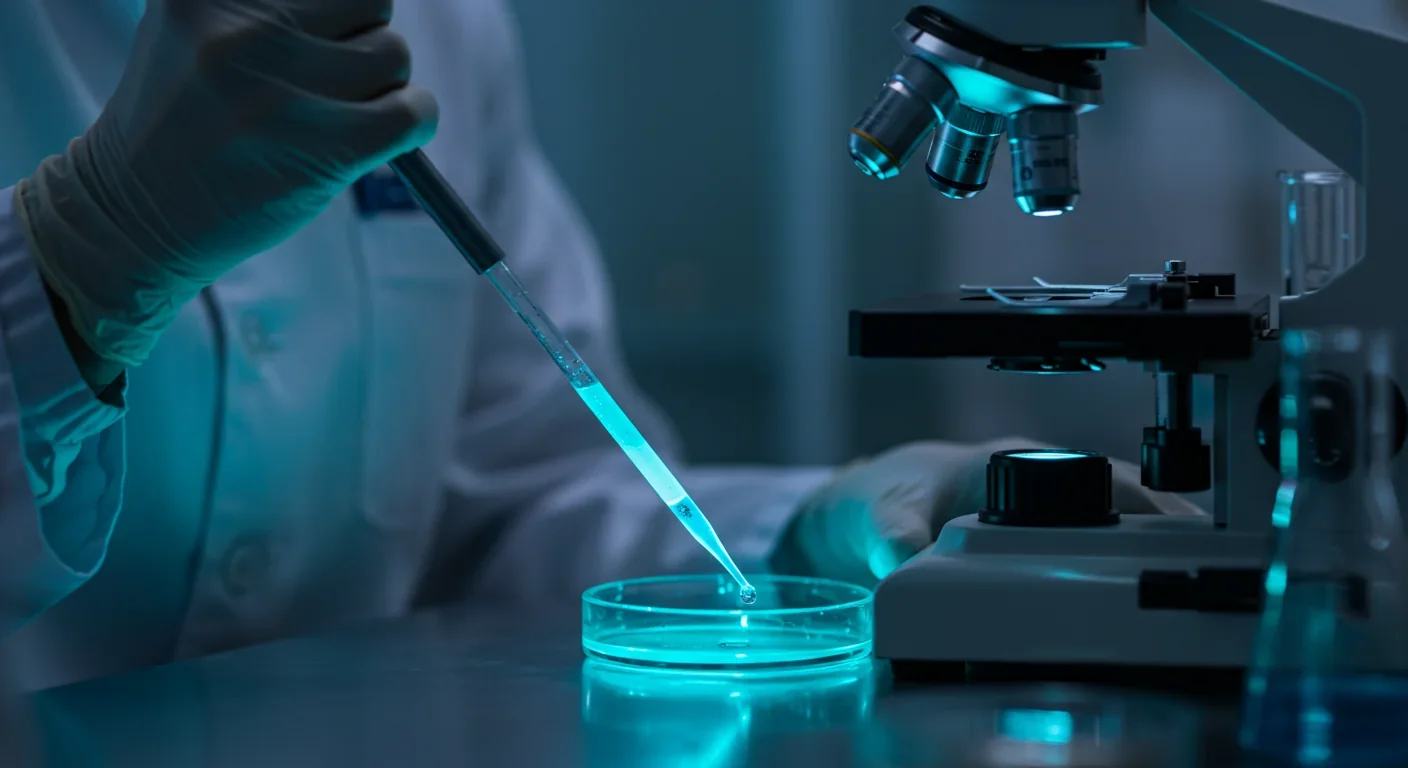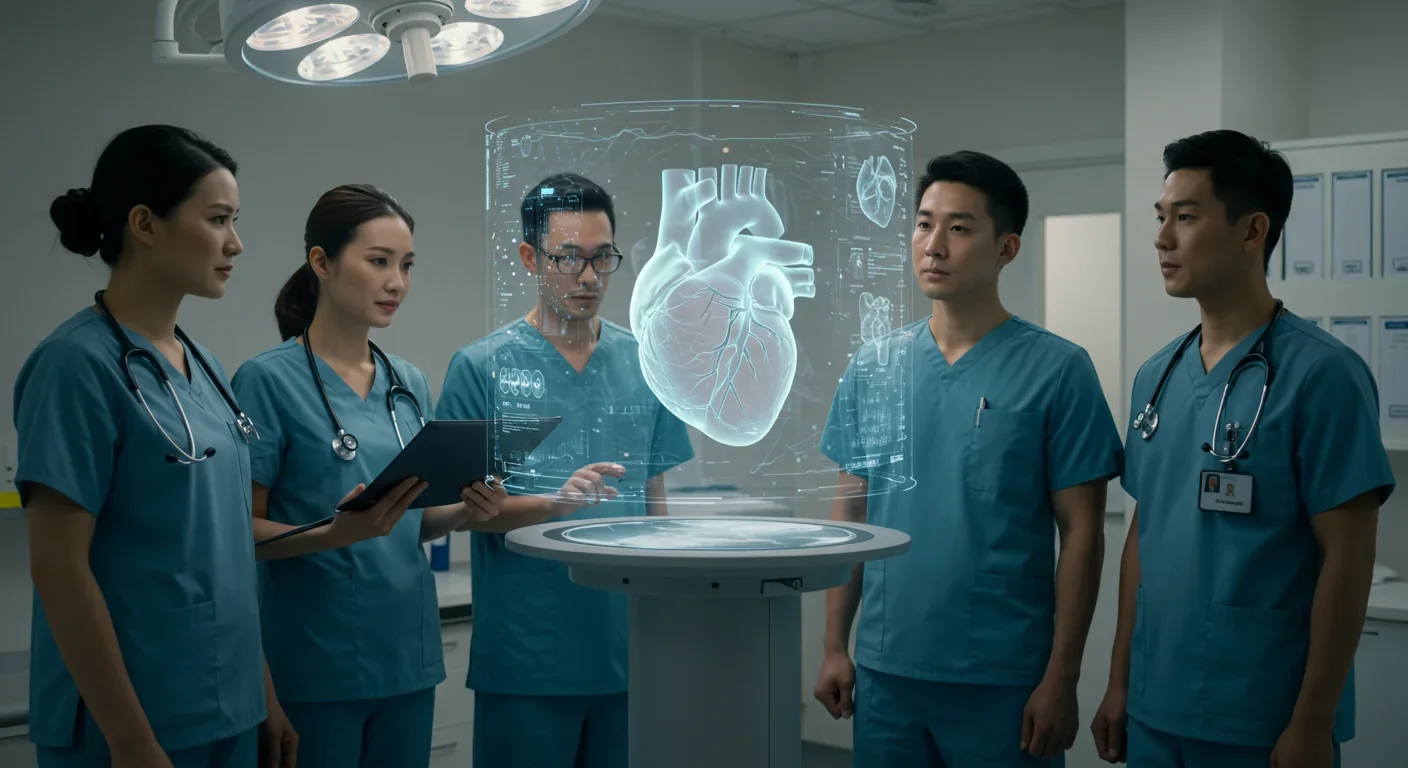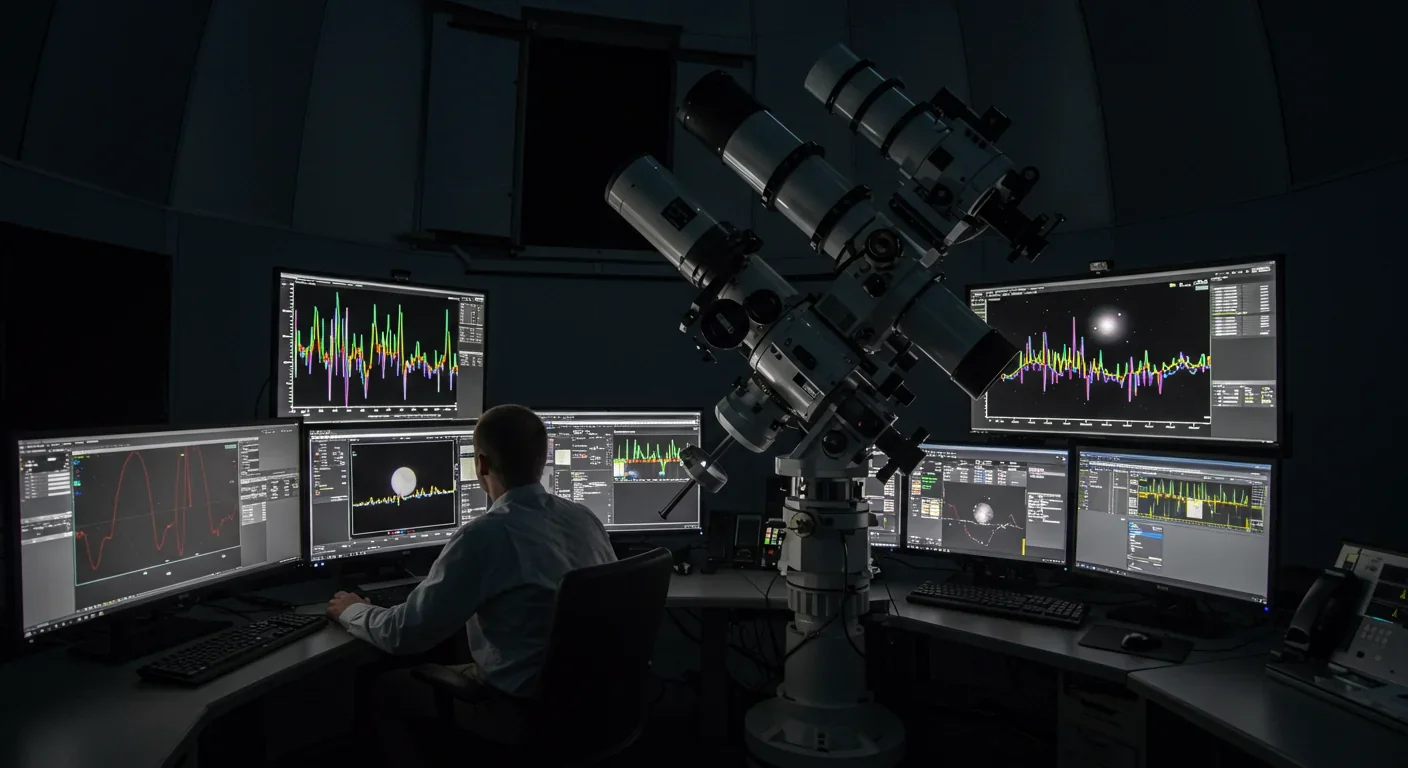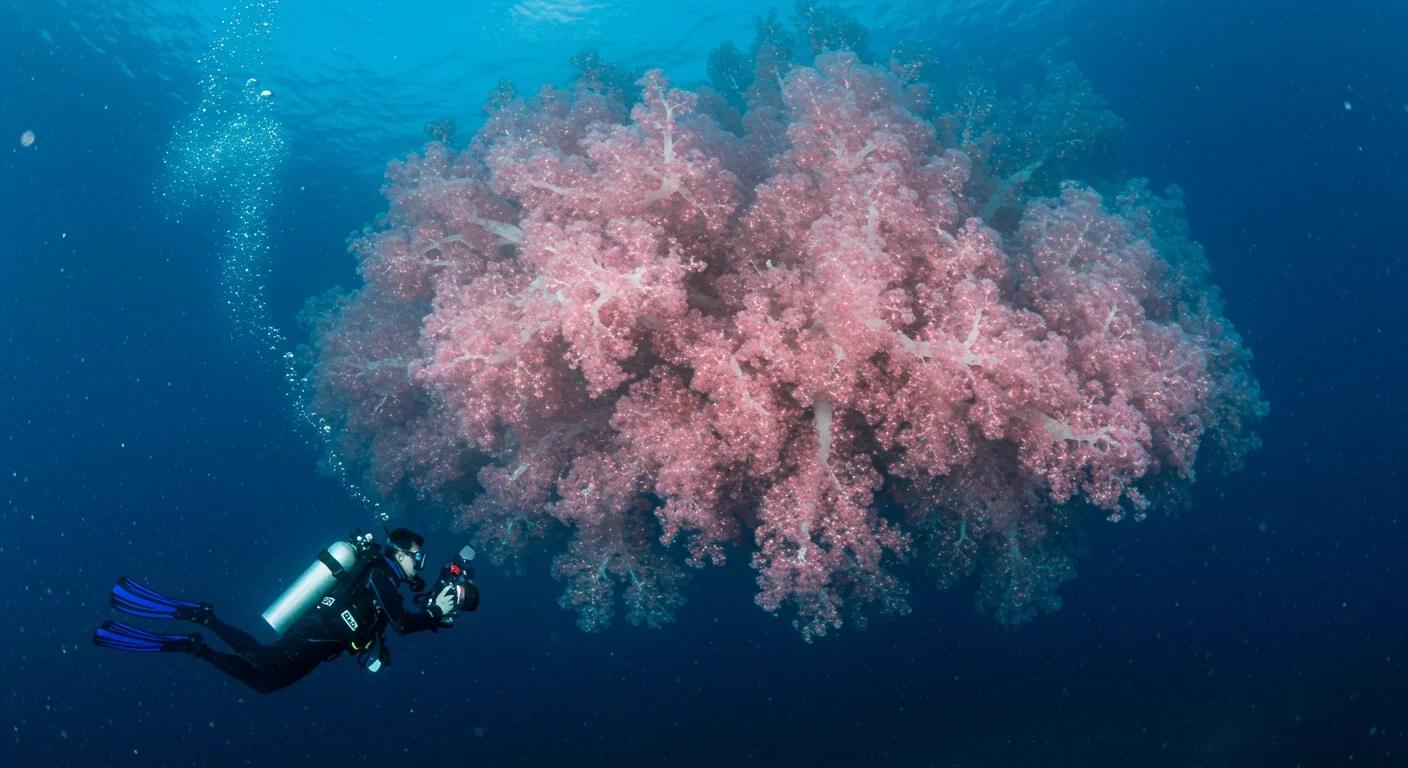Hidden Mold Mycotoxins Fueling Chronic Illness Epidemic

TL;DR: Mitochondrial transplantation—replacing damaged cellular powerhouses with healthy ones—is moving from experimental labs to clinical reality. Eight babies born via mitochondrial replacement therapy are thriving, while cardiac patients are recovering after direct mitochondrial injections. This breakthrough treats rare genetic disorders, heart disease, and potentially aging itself, with the global market projected to reach $1 billion by 2035. Yet challenges remain: long-term safety, ethical concerns about germline modification, manufacturing hurdles, and equitable access. We're witnessing humanity's first steps toward rewriting cellular infrastructure.

By 2030, doctors predict that mitochondrial transplantation—the direct replacement of damaged cellular powerhouses—will move from experimental labs into mainstream hospitals, offering millions of patients with incurable genetic disorders, heart disease, and age-related decline a chance at functional recovery. Eight children already walk the Earth with mitochondria from three genetic parents, all healthy and thriving. This is no longer science fiction.
In July 2025, Newcastle University researchers revealed something extraordinary: eight babies born through mitochondrial replacement therapy (MRT) had reached developmental milestones with no signs of the devastating diseases that would have killed them. Five showed zero detectable pathogenic mitochondrial DNA. The other three carried less than 16% mutant mitochondria—well below the 80% threshold where symptoms emerge.
But the revolution extends far beyond preventing inherited disease. In 2022, Dr. James McCully's team at Boston Children's Hospital injected healthy mitochondria directly into failing hearts of pediatric cardiac patients during surgery. Energy production restored. Tissue began repairing itself. Children who faced transplant waiting lists instead went home.
Meanwhile, Swiss biotech Cellvie just secured $5 million to advance mitochondria-based therapeutics for kidney transplantation and ischemia-reperfusion injury. Italian researchers discovered a cellular "master switch"—the protein PP2A-B55α—that simultaneously controls mitochondrial cleanup and creation, opening pathways to treat Parkinson's disease, rare mitochondrial disorders, and potentially cancer. The global mitochondrial therapeutics market, valued at $460.5 million in 2025, is projected to reach $1.02 billion by 2035.
Why now? Because three converging breakthroughs made mitochondrial medicine possible: scientists learned how to isolate intact, functional mitochondria at scale; they discovered cells will accept and integrate foreign mitochondria without rejection; and regulatory agencies in the UK and Australia approved germline mitochondrial replacement, setting a global precedent.
Humanity has a 70-year history of transplanting organs—kidneys, hearts, livers—but until recently, the idea of transplanting subcellular components seemed absurd. Mitochondria are roughly one-hundredth the size of a typical human cell, floating in the cytoplasm by the thousands. They carry their own DNA, replicate independently, and communicate with the cell nucleus through biochemical signals we're only beginning to decode.
The conceptual leap happened in 1982 when researchers Clark and Shay first proposed moving mitochondria from one cell into another. For decades, it remained a curiosity. Then came three technological shifts:
First, the stem cell revolution of the 2000s taught us that cells are modular and reprogrammable. Yamanaka's induced pluripotent stem cells proved we could rewind cellular fate. If we could turn skin cells into neurons, why not refresh a cell's power grid?
Second, advances in IVF and embryo manipulation developed the microsurgical tools and protocols to move subcellular structures without destroying fragile membranes. Pronuclear transfer and maternal spindle transfer—techniques refined to prevent mitochondrial disease transmission—became the foundation for therapeutic mitochondrial transplantation.
Third, sequencing technology made mitochondrial DNA profiling cheap and fast. For the first time, clinicians could measure heteroplasmy (the mix of healthy and mutant mitochondria in a cell) with single-digit precision, turning an invisible genetic lottery into a quantifiable medical target.
History teaches us that organ transplantation took 50 years to move from experimental horror show (early heart transplant patients died within days) to routine life-saving procedure. Mitochondrial transplantation is compressing that timeline to a decade.
Mitochondria are often called the powerhouses of the cell, but that undersells their role. They generate ATP (cellular energy currency), regulate calcium signaling, control cell death pathways, produce reactive oxygen species for immune defense, and synthesize critical metabolites. When they fail, cells starve, signals misfire, and tissues die.
Mitochondrial transplantation works through several approaches:
Direct injection: Healthy mitochondria are isolated from donor tissue (often the patient's own skeletal muscle, mesenchymal stem cells, or iPSC-derived cells), purified, and injected directly into damaged tissue. In cardiac applications, surgeons inject 5-6 billion mitochondria via intracoronary catheter or directly onto the heart surface during open surgery. Within hours, recipient cells internalize the mitochondria through actin-dependent endocytosis and macropinocytosis. The newcomers escape endosomal compartments and fuse with the existing mitochondrial network.
Remarkably, studies show transplanted mitochondria restore ATP production and improve cellular respiration without increasing total mitochondrial mass. This suggests that quality, not quantity, drives therapeutic benefit—a single functional mitochondrion may replace several damaged ones.

Extracellular vesicle delivery: Cells naturally package mitochondria into membrane-bound vesicles and ship them to neighboring cells via tunneling nanotubes (TNTs)—dynamic cytoplasmic bridges that connect distant cells. Mesenchymal stem cells are particularly good at this. Scientists now harvest MSC-derived extracellular vesicles loaded with healthy mitochondria and deliver them intravenously. The vesicles home to injured tissues, fuse with recipient cells, and release their cargo.
A critical discovery: even dysfunctional mitochondria, when transferred, can trigger therapeutic effects by activating mitophagy (the cellular cleanup of damaged mitochondria) and stimulating biogenesis (the creation of new mitochondria). This "priming effect" suggests that mitochondrial transplantation works through multiple mechanisms, not just direct replacement.
Germline replacement (MRT): For reproductive applications, two techniques dominate. Maternal spindle transfer (MST) removes the nuclear DNA from a patient's unfertilized egg and transplants it into a donor egg (with healthy mitochondria) whose nucleus has been removed. The reconstructed egg is then fertilized. Pronuclear transfer (PNT) does the same thing after fertilization, moving the pronuclei (nuclear DNA from sperm and egg before they fuse) into a donor embryo. MST carries less than 1% risk of carryover of mutant mitochondria; PNT carries 2-5%.
The mitochondrial DNA transferred represents only 0.1% of the total genome—37 genes encoding critical respiratory chain components. Nuclear DNA from the intended parents determines virtually all heritable traits. Yet those 37 genes are non-negotiable: mutations in them cause progressive, incurable diseases.
Mitochondrial medicine began focused on rare inherited disorders—MELAS syndrome (mitochondrial encephalopathy, lactic acidosis, stroke-like episodes), Leigh syndrome, Leber's hereditary optic neuropathy. These affect roughly 1 in 5,000 births and kill slowly through neurodegeneration, organ failure, and metabolic collapse. No cures exist; only symptom management.
MRT offers affected families a way to have genetically related children without passing on the mutation. Australia's "Maeve's Law" (2022) and UK regulations (2015) created pathways for couples at risk. The first three-parent baby was born in Mexico in 2016 to a Jordanian mother carrying Leigh syndrome mutations. By 2025, at least thirteen babies worldwide have been born through MRT, with eight in the UK showing normal development through early childhood.
But the real paradigm shift is this: mitochondrial dysfunction underlies a staggering range of common diseases. Aging itself is partly mitochondrial decay—oxidative damage accumulates, respiratory capacity drops, cells lose energy. This contributes to:
Neurodegenerative disease: Parkinson's and Alzheimer's both show severe mitochondrial impairment in affected neurons
Heart disease: Ischemia-reperfusion injury during heart attack damages mitochondria; mitochondrial transplantation reduces infarct size by over 30% in animal models
Diabetes: Pancreatic beta cells require massive energy; mitochondrial dysfunction impairs insulin secretion
Muscular dystrophy: Duchenne muscular dystrophy cardiomyopathy involves severe mitochondrial impairment
Chronic kidney disease: Kidney tubule cells are energy-hungry; mitochondrial damage accelerates renal failure
Stroke and cardiac arrest: Post-resuscitation mitochondrial dysfunction drives secondary brain and heart injury
Clinical trials are underway across these conditions. In a randomized trial of 30 STEMI (heart attack) patients, intracoronary injection of autologous mitochondria improved left ventricular ejection fraction from 35.6% to 47.7%—a dramatic functional recovery. In pediatric ECMO patients (children on life support after cardiac failure), mitochondrial transplantation achieved an 80% weaning rate versus 29% in controls.
The therapeutic window matters: delivering mitochondria 10 minutes after cardiac arrest in rat models increased 72-hour survival from 20% to 55%. This feasibility in emergency settings could revolutionize resuscitation medicine.
Mitochondrial transplantation offers something traditional medicine cannot: functional organelle replacement. Drugs modulate pathways; gene therapy corrects instructions; but mitochondrial therapy delivers working machinery.
Consider the implications:
Preventive rejuvenation: Aging clinics may one day offer mitochondrial "tune-ups"—periodic infusions of young, high-energy mitochondria to counteract age-related decline. Beiersdorf Venture Capital (a beauty and longevity specialist) invested in Cellvie precisely because healthy mitochondria may slow skin aging, improve wound healing, and enhance tissue resilience.
Organ preservation: Transplant organs deteriorate rapidly outside the body. Mitochondrial transplantation during ex vivo perfusion (machine preservation) could extend viable cold ischemia time, expanding donor pools and improving graft survival. Early studies show mitochondrial transfer shifts immune cells toward anti-inflammatory phenotypes, potentially reducing rejection.
Personalized regenerative medicine: Patient-derived iPSCs can generate unlimited healthy mitochondria. Imagine a scenario where your own cells, reprogrammed and optimized, provide a lifetime supply of fresh mitochondria—no immune rejection, no donor shortage.
Combination therapies: Mitochondrial transplantation synergizes with other treatments. In Parkinson's disease models, reducing the PP2A-B55α protein improved motor symptoms and mitochondrial health. Combining this with mitochondrial transplantation could provide both clearance of damaged organelles and replenishment with functional ones—a full reset.
Enhanced athletic and cognitive performance: If mitochondria determine energy capacity, could transplantation boost endurance or mental stamina? Ethical minefields abound, but the biology is plausible. Military and sports medicine researchers are paying attention.
The market projects reflect this breadth. Regional growth rates through 2035 are highest in Japan (7.4% CAGR) and South Korea (7.5%), where aging populations and government investment in regenerative medicine converge.
No breakthrough comes without shadows. Mitochondrial transplantation raises profound technical, ethical, and safety concerns.
Mitochondrial-nuclear mismatch: Mitochondria and the cell nucleus co-evolved over a billion years. Mitochondrial genes and nuclear genes must work in concert to build functional respiratory complexes. Mixing mitochondria from one individual with nuclear DNA from another creates evolutionary mismatches. Some scientists warn this could cause developmental disorders, accelerated aging, cancer, or premature death. So far, the eight UK MRT children show no such effects, but they're under five years old. Long-term monitoring through adulthood is essential.
Reversion and heteroplasmy: Three of the eight UK MRT babies carried 5-16% mutant mitochondria despite the procedure's intent to eliminate them. Over time, mutant mitochondria can outcompete healthy ones if they replicate faster—a phenomenon called "reversion." If mutant levels cross the disease threshold (typically 60-80%), symptoms emerge. The mechanisms driving reversion are poorly understood, and no interventions yet exist to prevent it.
Germline modification: MRT is inheritable. Every cell in the child's body—including eggs or sperm—contains donor mitochondria, which pass to the next generation. This makes MRT a form of germline genetic modification, banned in dozens of countries. Critics argue we're experimenting on future people who cannot consent, introducing irreversible changes into the human gene pool. Proponents counter that donor mitochondria are naturally occurring (not engineered) and represent transplantation, not modification. But the ethical line remains blurry.

Immune responses: Most studies show mitochondria don't trigger strong immune rejection, even when allogeneic (from another person). But edge cases exist. Mitochondria contain pathogen-associated molecular patterns (PAMPs) that can activate innate immunity. High doses or repeated treatments might provoke inflammation or neutralizing responses. Long-term immunosuppression could negate benefits.
Manufacturing and standardization: Fresh mitochondria outperform frozen ones—freezing reduces ATP production by over 70%. This creates logistical nightmares. Sourcing, isolating, and delivering mitochondria within hours demands GMP-compliant facilities, trained personnel, and cold-chain logistics. Cellvie's $5 million funding aims to solve this by developing off-the-shelf, cryopreserved mitochondria that retain function. Until that works, scalability remains a bottleneck.
Cost and access: North Cyprus IVF estimates MRT costs €14,000 for two egg retrievals, donor eggs, and embryo transfer—comparable to multiple IVF cycles but still prohibitive for many families. Therapeutic mitochondrial transplantation (for hearts, kidneys, etc.) involves surgical procedures, specialized labs, and experimental status. Insurance rarely covers it. Without subsidies or tech breakthroughs, mitochondrial medicine risks becoming a luxury good, deepening health inequalities.
Efficacy gaps: Not all trials succeed. The AUGMENT procedure—injecting a woman's own mitochondria (from oogonial stem cells) into her eggs during IVF—showed no benefit in randomized trials. Autologous transfer doesn't work if the source mitochondria are equally damaged. Selecting high-quality donor sources is critical, yet biomarkers for "good" mitochondria remain poorly defined.
Mitochondrial medicine sits at the intersection of reproduction, genetic modification, and medical innovation—a nexus where cultural values collide.
United Kingdom: First to legalize MRT (2015), the UK frames mitochondrial donation as analogous to organ transplantation—replacing defective parts, not designing babies. The Human Fertilisation and Embryology Authority (HFEA) requires case-by-case approval, ensuring regulatory oversight. Public consultations showed broad support, viewing prevention of severe disease as ethically justified. The UK model emphasizes incremental progress: strict licensing, data collection, long-term follow-up.
Australia: "Maeve's Law" (2022) legalized MRT and funded the mitoHOP research program, aiming for participant recruitment by 2025. The law emerged from fierce advocacy by families like Maeve Hood's, whose daughter died from Leigh syndrome. Australia's approach blends compassion with caution—legal authorization paired with robust research infrastructure.
United States: MRT remains illegal. In 2016, the FDA warned clinics against offering it, citing safety concerns and the need for congressional approval of germline modification. Yet in 2016, Dr. John Zhang performed MRT in Mexico for a Jordanian couple, resulting in a healthy boy. The regulatory gap pushed innovation offshore, raising concerns about medical tourism and inconsistent standards. Some U.S. researchers advocate for controlled trials under FDA oversight; others see the ban as ideological overreach.
China: Reports suggest mitochondrial and germline research continue in grey zones. China's regulatory environment allows faster experimentation but less transparency. The 2018 "CRISPR babies" scandal (He Jiankui editing embryos) heightened global scrutiny, yet China's aging population and government investment in biotech create strong incentives for mitochondrial therapies.
Religious and philosophical divides: Catholic bioethicists often oppose MRT because it involves creating and destroying embryos (in PNT) and constitutes germline modification. Islamic scholars have offered mixed opinions, with some permitting MRT to prevent severe disease as a form of treatment. Secular ethicists debate whether 0.1% genetic contribution constitutes a "third parent" or merely a medical intervention. Feminist scholars highlight how MRT shifts reproductive risk and labor onto women's bodies, requiring invasive egg donation and retrieval.
International cooperation remains limited. No global treaty governs mitochondrial medicine. Countries pursue national policies, risking a patchwork of standards, reproductive tourism, and inequitable access.
For patients and families: Stay informed about clinical trials. Resources like MitoAction, MitoCanada, and the Cure Mito Foundation offer trial registries, family networks, and research updates. If you carry mitochondrial mutations, genetic counseling and discussions about MRT with fertility specialists can clarify options. Advocate for research funding and insurance coverage—patient voices drive policy.
For healthcare professionals: Mitochondrial medicine demands interdisciplinary expertise—genetics, cell biology, surgery, embryology. Training programs must integrate mitochondrial physiology into medical curricula. Clinicians should familiarize themselves with heteroplasmy testing, mitochondrial DNA panels, and referral pathways to specialized centers. As therapies move toward approval, knowing when to recommend mitochondrial transplantation will become a core competency.
For researchers and biotech: Key challenges remain unsolved: improving cryopreservation, identifying biomarkers of mitochondrial quality, preventing reversion, understanding nuclear-mitochondrial compatibility, and scaling manufacturing. Breakthroughs in these areas will unlock billion-dollar markets. Collaboration between academia, industry, and regulators accelerates translation.
For policymakers: Establish clear, evidence-based regulatory frameworks that balance innovation with safety. Long-term registries tracking MRT children into adulthood are essential. International dialogue can harmonize standards and prevent races to the bottom. Funding basic research into mitochondrial biology provides the foundation for safe therapies.
For society: Mitochondrial medicine forces us to confront difficult questions. What counts as therapy versus enhancement? Who decides which lives are worth preventing? How do we ensure equitable access? Public engagement—beyond expert committees—builds trust and legitimacy. Education campaigns can counter misinformation and clarify what mitochondrial transplantation does and doesn't do.
The next decade will determine whether mitochondrial medicine becomes a niche tool for rare diseases or a pillar of regenerative medicine. Early indicators suggest the latter. With eight healthy children born via MRT, cardiac patients recovering post-transplant, and market projections doubling by 2035, momentum is building.
Yet the stakes are higher than market size or patient numbers. Mitochondrial transplantation represents a fundamental shift in medicine's ambition—from managing symptoms to replacing broken parts at the subcellular level. If we can swap out mitochondria, what else becomes possible? Organelle engineering could extend to ribosomes, peroxisomes, even synthetic organelles designed from scratch.
We stand at a threshold. The next generation may look back at 2025 as the moment humanity learned to rewrite cellular infrastructure, not just genetic code. That power demands wisdom, humility, and vigilance. The future of mitochondrial medicine will be written not in labs alone, but in the choices we make about who benefits, who decides, and what kind of species we wish to become.
Mitochondria have powered life for two billion years. Now, for the first time, we're learning to harness that power deliberately. The revolution has already begun.

Over 80% of nearby white dwarfs show chemical fingerprints of destroyed planets in their atmospheres—cosmic crime scenes where astronomers perform planetary autopsies using spectroscopy. JWST recently discovered 12 debris disks with unprecedented diversity, from glassy silica dust to hidden planetary graveyards invisible to previous surveys. These stellar remnants offer the only direct measurement of exoplanet interiors, revealing Earth-like rocky worlds, Mercury-like metal-rich cores, and ev...

Hidden mold in homes releases invisible mycotoxins—toxic chemicals that persist long after mold removal, triggering chronic fatigue, brain fog, immune dysfunction, and neurological damage. Up to 50% of buildings harbor mold, yet most mycotoxin exposure goes undetected. Cutting-edge airborne testing, professional remediation, and medical detox protocols can reveal and reverse this silent epidemic, empowering individuals to reclaim their health.

Data centers consumed 415 terawatt-hours of electricity in 2024 and will nearly double that by 2030, driven by AI's insatiable energy appetite. Despite tech giants' renewable pledges, actual emissions are up to 662% higher than reported due to accounting loopholes. A digital pollution tax—similar to Europe's carbon border tariff—could finally force the industry to invest in efficiency technologies like liquid cooling, waste heat recovery, and time-matched renewable power, transforming volunta...

Transactive memory is the invisible system that makes couples, teams, and families smarter together than apart. Psychologist Daniel Wegner discovered in 1985 that our brains delegate knowledge to trusted partners, creating shared memory networks that reduce cognitive load by up to 40%. But these systems are fragile—breaking down when members leave, technology overwhelms, or communication fails. As AI and remote work reshape collaboration, understanding how to intentionally build and maintain ...

Mass coral spawning synchronization is one of nature's most precisely timed events, but climate change threatens to disrupt it. Scientists are responding with selective breeding, controlled laboratory spawning, and automated monitoring to preserve reef ecosystems.

Your smartphone isn't just a tool—it's part of your mind. The extended mind thesis argues that cognition extends beyond your skull into devices, AI assistants, and wearables that store, process, and predict your thoughts. While 79% of Americans now depend on digital devices for memory, this isn't amnesia—it's cognitive evolution. The challenge is designing tools that enhance thinking without hijacking attention or eroding autonomy. From brain-computer interfaces to AI tutors, the future of co...

Transformers revolutionized AI by replacing sequential processing with parallel attention mechanisms. This breakthrough enabled models like GPT and BERT to understand context more deeply while training faster, fundamentally reshaping every domain from language to vision to multimodal AI.